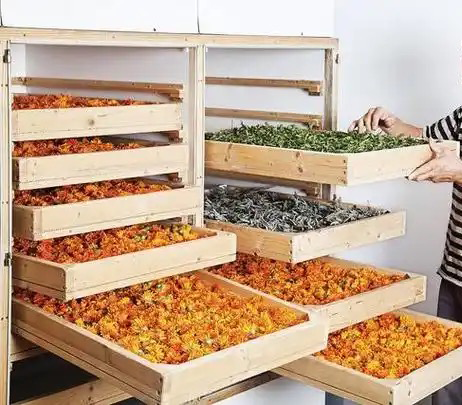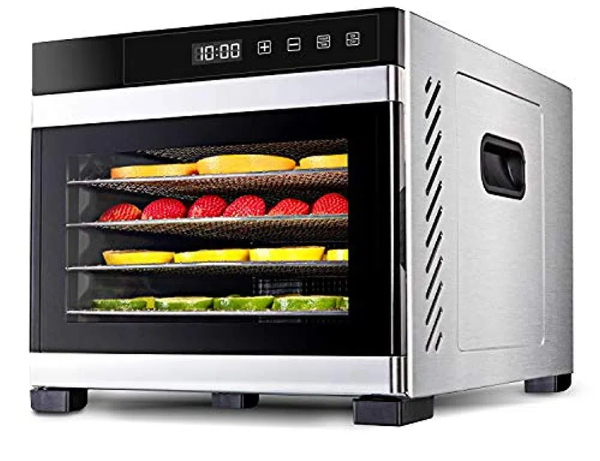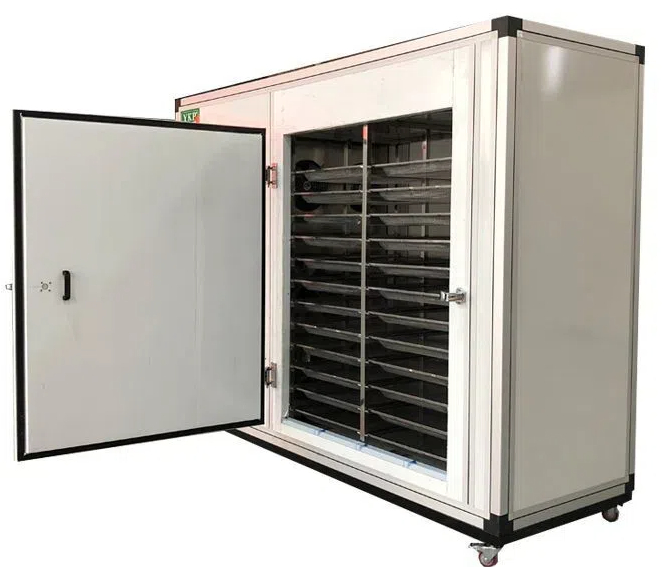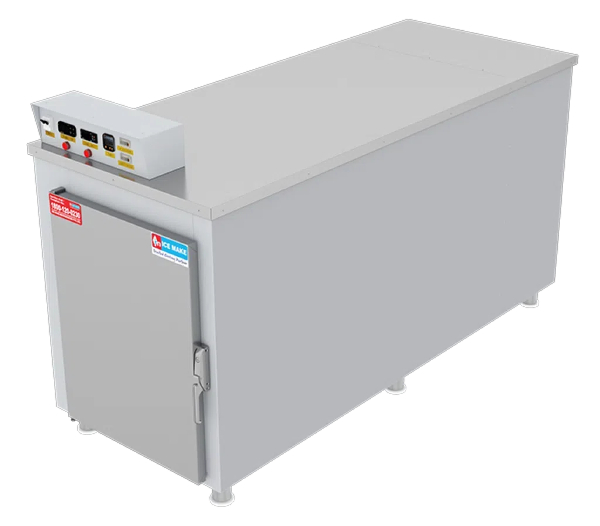
Content Menu
● Introduction
● Understanding Food Drying
>> The Importance of Moisture Control
● What Are Heat Pump Dryers?
● How Heat Pump Dryers Work
● Advantages of Heat Pump Dryers
>> 1. Energy Efficiency
>> 2. Reduced Condensation
>> 3. Gentle Drying Process
>> 4. Versatility
>> 5. Environmentally Friendly
● Applications in the Food Industry
● Comparing Heat Pump Dryers to Traditional Dryers
>> Traditional Dryers
● Heat Pump Dryers
● The Science Behind Heat Pump Drying
● The Refrigeration Cycle
● Case Studies: Success Stories in Food Drying
>> Case Study 1: Fruit Processing Plant
>> Case Study 2: Herb Drying Facility
>> Case Study 3: Meat Jerky Production
● Conclusion
● Frequently Asked Questions
>> 1. What is the main advantage of using a heat pump dryer for food drying?
>> 2. Can heat pump dryers be used for all types of food?
>> 3. How do heat pump dryers reduce condensation?
>> 4. Are heat pump dryers suitable for delicate food items?
>> 5. What are the typical applications of heat pump dryers in the food industry?
Introduction
In the world of food processing, drying is a crucial step that significantly affects the quality, shelf life, and safety of food products. As a leading manufacturer of food drying machines in China, we specialize in providing OEM services to international brands, wholesalers, and producers. This article explores the effectiveness of heat pump dryers in reducing condensation compared to traditional dryers, focusing on their advantages, operational principles, and applications in the food industry.

Understanding Food Drying
Food drying is a method of preserving food by removing moisture, which inhibits the growth of bacteria, yeasts, and molds. The drying process can be achieved through various methods, including air drying, sun drying, and mechanical drying. Among these, mechanical drying using specialized equipment has become increasingly popular due to its efficiency and effectiveness.
The Importance of Moisture Control
Moisture control is vital in food drying. Excess moisture can lead to spoilage, mold growth, and reduced shelf life. Therefore, choosing the right drying technology is essential for maintaining product quality. Traditional dryers, such as convection and drum dryers, have been widely used, but they often struggle with condensation issues, which can affect the drying process and the final product.
What Are Heat Pump Dryers?
Heat pump dryers are advanced drying machines that utilize a heat pump system to transfer heat from the environment to the drying chamber. This technology allows for efficient moisture removal while maintaining a controlled temperature and humidity level. Unlike traditional dryers, heat pump dryers recycle the air within the system, significantly reducing energy consumption and minimizing condensation.
How Heat Pump Dryers Work
Heat pump dryers operate on the principle of thermodynamics. They consist of several key components:
1. Evaporator: Absorbs heat from the surrounding air and evaporates refrigerant, which cools the air inside the dryer.
2. Compressor: Compresses the refrigerant, raising its temperature and pressure.
3. Condenser: Releases heat back into the drying chamber, warming the air and facilitating moisture evaporation from the food.
4. Expansion Valve: Regulates the flow of refrigerant, allowing it to expand and cool before returning to the evaporator.
This closed-loop system allows heat pump dryers to operate at lower temperatures, making them ideal for drying sensitive food products without compromising quality.

Advantages of Heat Pump Dryers
1. Energy Efficiency
One of the most significant advantages of heat pump dryers is their energy efficiency. They consume less energy compared to traditional dryers, which can lead to substantial cost savings over time. This efficiency is particularly beneficial for food manufacturers looking to reduce operational costs.
2. Reduced Condensation
Heat pump dryers are designed to minimize condensation. By recycling air and maintaining optimal humidity levels, they prevent excess moisture from accumulating in the drying chamber. This feature is crucial for food drying, as it helps maintain product quality and prevents spoilage.
3. Gentle Drying Process
The lower operating temperatures of heat pump dryers make them suitable for drying delicate food items, such as fruits and vegetables. This gentle drying process helps preserve the nutritional value, color, and flavor of the food, resulting in a higher-quality final product.
4. Versatility
Heat pump dryers can be used for various food products, including fruits, vegetables, herbs, and meats. Their ability to adjust temperature and humidity levels makes them adaptable to different drying requirements, making them a versatile choice for food manufacturers.
5. Environmentally Friendly
By using less energy and reducing waste, heat pump dryers are more environmentally friendly than traditional drying methods. This sustainability aspect is increasingly important for consumers and businesses alike, as the demand for eco-friendly practices continues to grow.
Applications in the Food Industry
Heat pump dryers are widely used in the food industry for various applications, including:
1. Fruit Drying: Heat pump dryers are ideal for drying fruits like apples, bananas, and berries, preserving their natural sweetness and nutritional content.
2. Vegetable Drying: Vegetables such as carrots, peas, and bell peppers can be effectively dried using heat pump technology, ensuring they retain their color and flavor.
3. Herb Drying: Delicate herbs like basil, thyme, and oregano benefit from the gentle drying process of heat pump dryers, maintaining their essential oils and aromas.
4. Meat Drying: Heat pump dryers can also be used for drying meats, producing high-quality jerky and other dried meat products.
Comparing Heat Pump Dryers to Traditional Dryers
Traditional Dryers
Traditional dryers, such as convection and drum dryers, have been the standard in the food industry for many years. However, they often face challenges related to condensation and energy efficiency. These dryers typically operate at higher temperatures, which can lead to:
1. Increased energy consumption
2. Higher risk of product spoilage due to uneven drying
3. Greater condensation issues, leading to potential mold growth
Heat Pump Dryers
In contrast, heat pump dryers offer several advantages:
1. Lower Energy Consumption: Heat pump dryers use significantly less energy, making them more cost-effective in the long run.
2. Consistent Drying Conditions: The ability to control temperature and humidity levels ensures a more consistent drying process, resulting in higher-quality products.
3. Reduced Risk of Spoilage: By minimizing condensation, heat pump dryers help prevent spoilage and extend the shelf life of dried products.
The Science Behind Heat Pump Drying
Understanding the science behind heat pump drying can further illustrate its advantages. The heat pump dryer operates on the principle of heat transfer, where heat is extracted from the air and used to evaporate moisture from the food. This process involves several thermodynamic principles, including the refrigeration cycle, which is essential for maintaining the desired temperature and humidity levels.
The Refrigeration Cycle
The refrigeration cycle is a fundamental concept in heat pump technology. It consists of four main stages:
1. Evaporation: The refrigerant absorbs heat from the air in the evaporator, causing it to evaporate and cool the air.
2. Compression: The compressor increases the pressure and temperature of the refrigerant vapor.
3. Condensation: The hot refrigerant gas passes through the condenser, releasing heat into the drying chamber and warming the air.
4. Expansion: The refrigerant expands and cools, returning to the evaporator to repeat the cycle.
This continuous cycle allows heat pump dryers to maintain optimal drying conditions while minimizing energy consumption.
Case Studies: Success Stories in Food Drying
Case Study 1: Fruit Processing Plant
A fruit processing plant in China implemented heat pump dryers to enhance their drying process. Previously, they used traditional convection dryers, which resulted in inconsistent drying and high energy costs. After switching to heat pump dryers, they observed a 30% reduction in energy consumption and improved product quality, with fruits retaining their color and flavor.
Case Study 2: Herb Drying Facility
An herb drying facility in Europe faced challenges with moisture control and product spoilage. By adopting heat pump technology, they were able to maintain optimal humidity levels, significantly reducing condensation issues. This transition not only improved the quality of their dried herbs but also increased their production capacity by 25%.
Case Study 3: Meat Jerky Production
A meat jerky producer in the United States switched to heat pump dryers to enhance their drying process. The lower temperatures allowed them to produce jerky with better texture and flavor while reducing energy costs by 40%. The ability to control humidity levels also minimized the risk of spoilage, leading to longer shelf life for their products.
Conclusion
In conclusion, heat pump dryers are a superior choice for food drying compared to traditional dryers. Their energy efficiency, reduced condensation, and gentle drying process make them ideal for preserving the quality of food products. As a leading manufacturer of food drying machines, we are committed to providing innovative solutions that meet the needs of our clients in the food industry.

Frequently Asked Questions
1. What is the main advantage of using a heat pump dryer for food drying?
The main advantage is energy efficiency, which leads to cost savings and reduced environmental impact.
2. Can heat pump dryers be used for all types of food?
Yes, heat pump dryers are versatile and can be used for fruits, vegetables, herbs, and meats.
3. How do heat pump dryers reduce condensation?
They recycle air and maintain optimal humidity levels, preventing excess moisture accumulation.
4. Are heat pump dryers suitable for delicate food items?
Yes, their lower operating temperatures make them ideal for drying delicate foods without compromising quality.
5. What are the typical applications of heat pump dryers in the food industry?
Common applications include drying fruits, vegetables, herbs, and meats.












